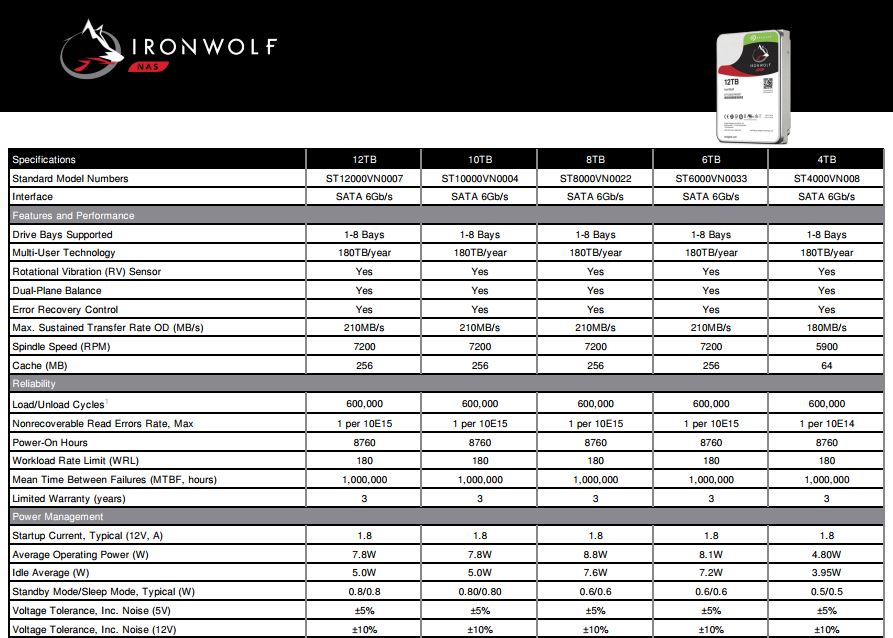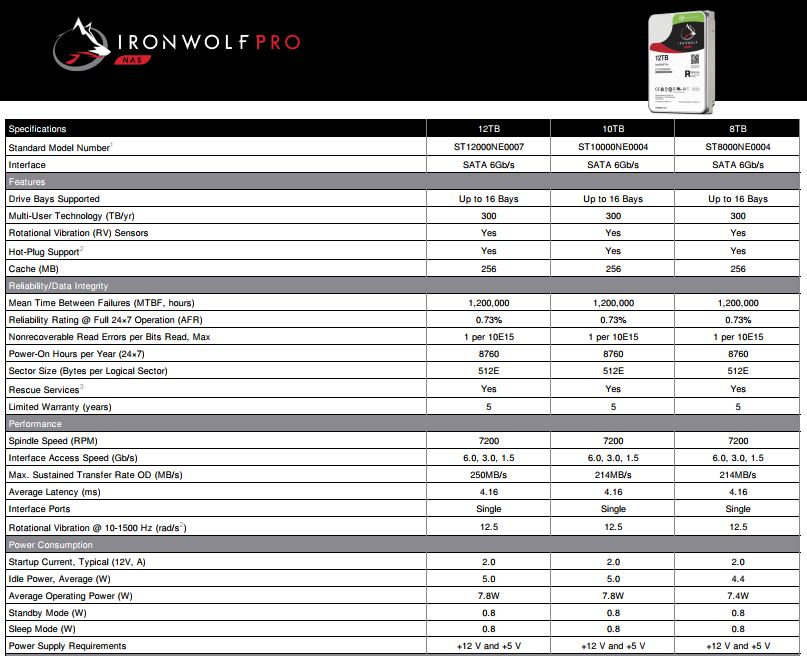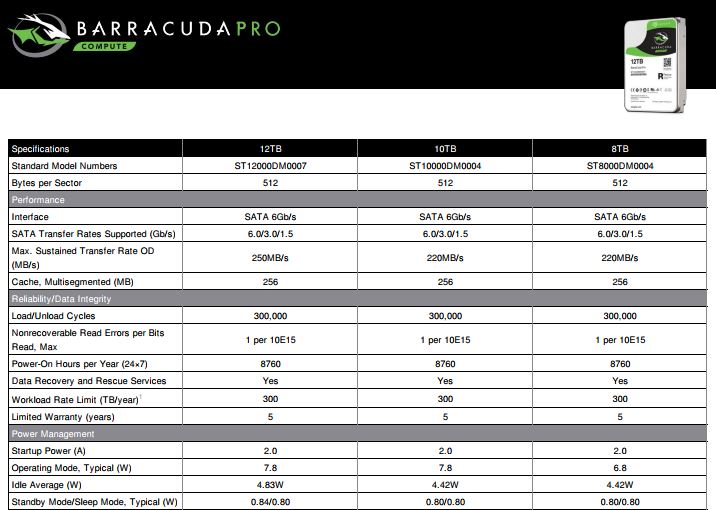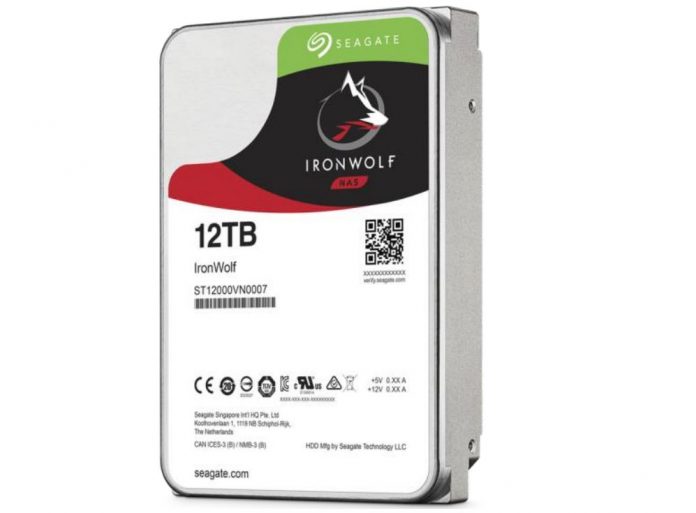Hard drive capacities are bumping up ever so slowly. Although they are, by far, not the largest medium anymore, they are the cheapest with decent read/ write performance. The new Seagate IronWolf and BarraCuda Pro 12TB drives follow their 10TB announcement in July 2016, or about 15 months ago. For posterity, here is the official press release.
12TB IronWolf NAS Hard Drive Specs
Seagate’s solution for the 1-8 bay market is the IronWolf 12TB NAS hard drive. Here are the specs:

With a 12TB size, a paltry 1M hour MTBF, and a UBER rate of 1 in 10^16, we suggest never using these as single drives. Always use at least RAID 1. The drives are now too big to be using alone for data security purposes, especially given these lower reliability ratings.
For some context, a typical server SSD these days is 2 to 2.5 million hour MTBF with a UBER rate of 1 in 10^17.
In terms of reliability, we want to point out that this is a 12TB drive with a 180TB/ year rating. The SSD industry is fixated on drive writes per day. 180TB is only 15 drive writes per year or about 0.041 DWPD. In context, a 0.1 or 0.3 DWPD SSD is considered very low write endurance in 2017. It also means that these have about a 0.5TB / day duty cycle.
12TB IronWolf Pro NAS Hard Drive Specs
If you have a 9-16 bay NAS, the 12TB IronWolf Pro hard drive is your answer. Here is the spec sheet:

You will notice that Seagate ups the MTBF to 1.2 million hours and the warranty up to 5 years for this model. It is also rated at 300TB/ year, 0.82 TB/day, or 0.068 DWPD. Seagate also puts an AFR rating for 24×7 operation of only 0.73% for the new drive. That is a figure not listed for the non-Pro IronWolf.
Perhaps the most interesting feature is 2 years of data recovery services for the Pro drives with registration. That is certainly an intriguing proposition, especially when hard drive AFR is generally accepted to be several times that of SSDs.
12TB BarraCuda Pro Hard Drive Specs
First, here are the 12TB BarraCuda Pro hard drive specs:

As we noted above, 12TB drives should only be used in RAID 1 or another type of storage with redundancy. It makes the idea of a 12TB desktop hard drive questionable. On the other hand, it shares the 300TB/ year rating and 5-year warranty.





Note: 10E15 = 10^16.
I don’t know why hard drive manufacturers write 10E15. It’s not clear if they actually mean 10*10^15 or if they mean 1.0E15 or 10^15 or something else. Fortunately the number is basically pulled out of their ass, so it doesn’t matter much.